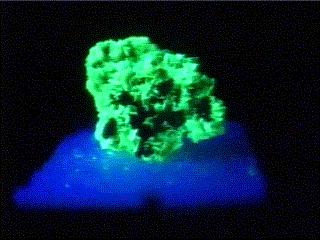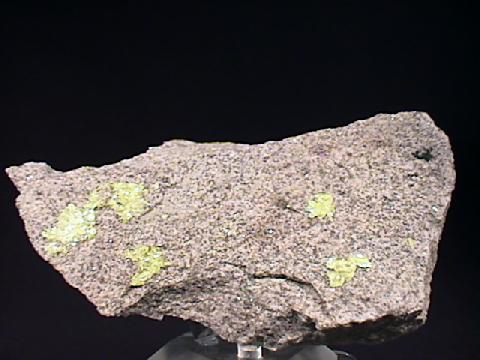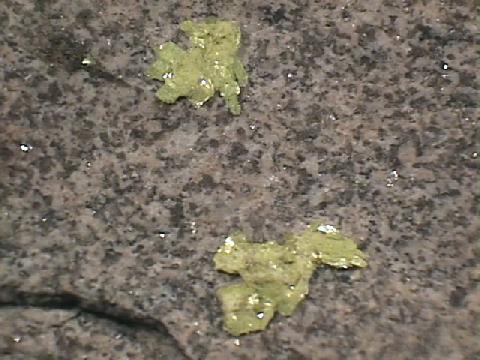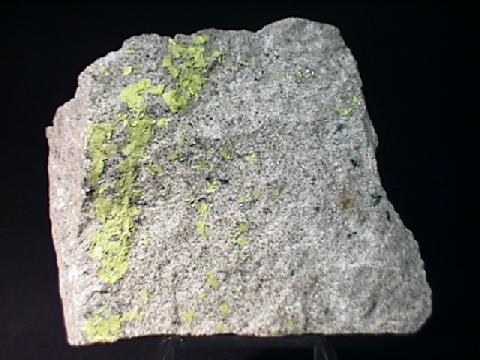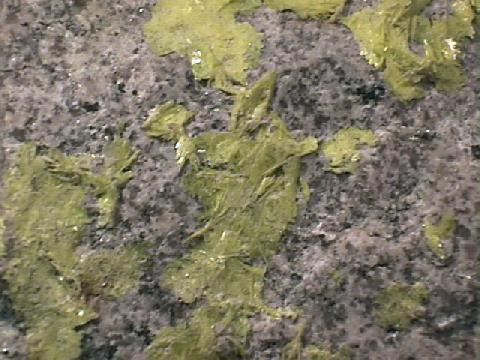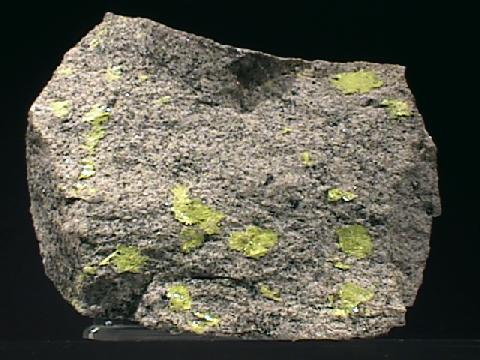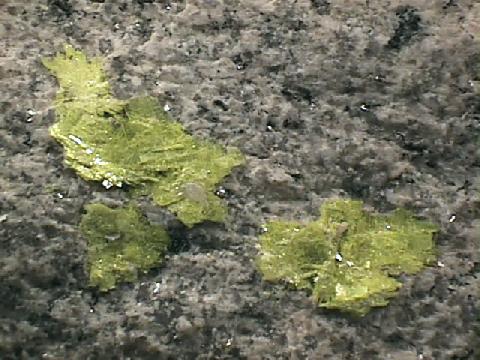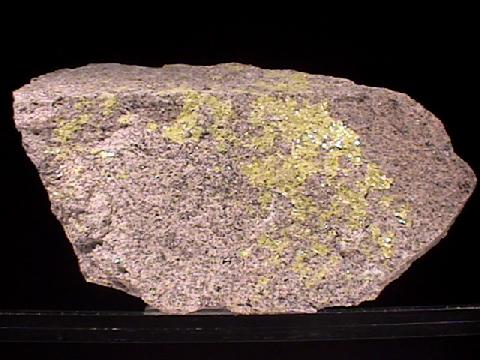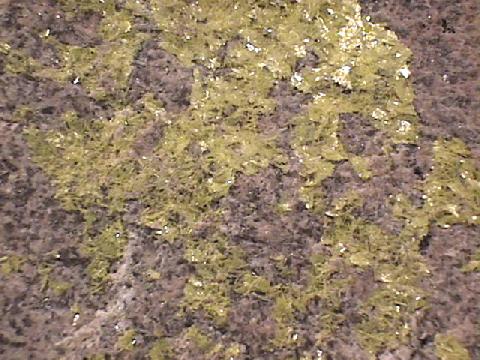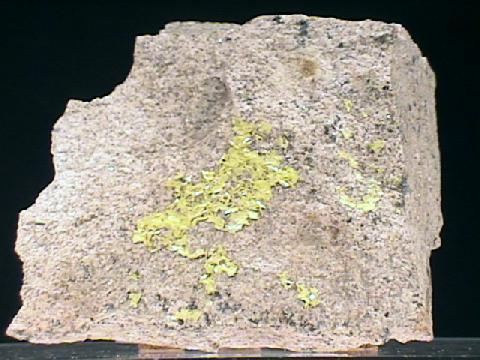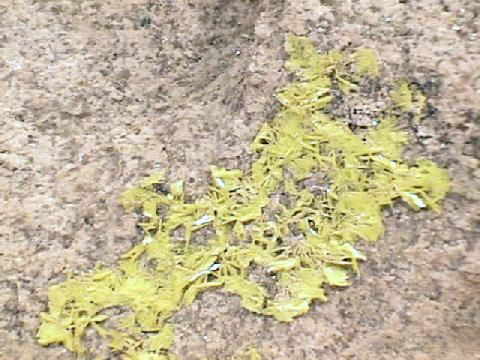 The Mineral URANOCIRCITE
The Mineral URANOCIRCITE
 (under longwave UV light)
(under longwave UV light)
The structure of uranocircite is composed of phosphate tetrahedrons linked to uranium-oxygen groups that form distorted octahedrons. The phosphates and uranium groups lie in sheets that are weakly held together by water molecules. This structure produces the platy habit, the one perfect direction of cleavage, and the relative softness.
Uranocircite can lose water and convert to a different mineral called meta-uranocircite of the meta-autunite/meta-torbernite group of minerals. The change to meta-uranocircite will often produce a pseudomorph. A pseudomorph is generally an atom by atom replacement of one mineral's chemistry to form another mineral. The process leaves the crystal shape of the lost mineral intact. Pseudomorph means false (psuedo) shape (morph). In this case, the conversion is not so dramatic since it involves only the loss of a few water molecules, and therefore a good pseudomorph is likely to form. The conversion is irreversible and ongoing, and all collection specimens of a certain age are almost certainly at least partially converted.
Fine specimens should be stored in a closed container to avoid water loss. Remember, this is a radioactive mineral and should be stored away from other minerals that are affected by radioactivity and human exposure should be limited.
PHYSICAL CHARACTERISTICS:
- Colors are various shades of yellow to light yellow-green.
- Luster is vitreous to pearly on the main pinacoid.
- Transparency crystals can be transparent to translucent.
- Crystal System is tetragonal; 4/m 2/m 2/m
- Crystal Habits include platy square crystals usually in bladed aggregates. Crystals can form in parallel growths giving a "deck of cards" kind of look. Also as crusts, micaceous, foliated and scaly aggregates. Sometimes in attractive rosettes.
- Cleavage is perfect in one direction.
- Fracture is uneven.
- Hardness is 2.5
- Specific Gravity is approximately 3.5+ (above average for translucent minerals)
- Streak is a yellow tint.
- Associated Minerals are autunite, uranophane, torbernite, meta-torbernite, uraninite and other uranium minerals.
- Other Characteristics: radioactive, fluorescent green and cleavage sheets are slightly bendable.
- Notable Occurrences include Bergen, Germany; Autun, France; Cornwall, England; Mitchell Co., North Carolina and Mt. Spokane, Washington, USA; Zaire; Portugal and France.
- Best Field Indicators are color, crystal habit, fluorescence, radioactivity, associations and density.


